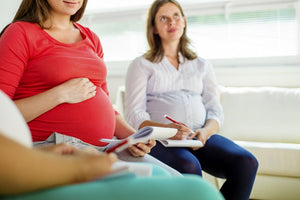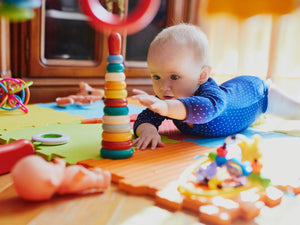Key points
- Rashes are very common in babies and young children.
- Most rashes are caused by viral infections which are harmless and don’t need any special treatment.
- Different viruses can cause similar rashes, or unique types of rashes.
- Some rashes are a sign of more serious illness e.g., measles or meningococcal infection. Rashes which don’t blanche (turn white) when pressed, fever, neck stiffness and light sensitivity are symptoms which need to be immediately checked by a doctor.
What has caused my child’s rash?
Rashes are common in childhood and it can be hard to know what may be the cause. Some children seem particularly prone to skin reactions and rashes, others are a little less reactive. Generally, rashes are nothing to be concerned about and are harmless.
Most of the time, rashes tend to go away as quickly as they appear and don’t need any special treatment. But sometimes rashes are a symptom of illness and a sign that a doctor’s check is necessary. Basic first aid is covered in our Parenting Guide but if you are unsure, always check with your local GP.

Common causes for skin rashes
Viral infections, nappy rash, food sensitivities, eczema or other skin conditions are the most common reasons why rashes occur. Some children develop heat rash, also called prickly heat, in the warmer months of the year.
It’s not uncommon for children to develop a ‘teething rash’ around their mouth when their teeth are erupting through their gums. In toddlers, this is generally around the age when they are getting their first and second year molars.
Some children also develop a nappy rash when their teeth are erupting, which generally responds well to more frequent nappy changes and barrier cream applied to the skin covered by their nappy.
Rashes can come in different forms. The way a rash looks can give clues about its cause.
Other common rashes are caused by impetigo, erythema nodosum and even fungal infections e.g. ringworm, or mite infections e.g. scabies.
Rash types
Rashes can look different depending where on the body they appear. Often, rashes spread to different parts of the body before they disappear. Rashes can also last for a couple of hours or up to a few days before the skin returns to normal.
- Raised rashes – mean they can be felt as you slide your fingers over the rash.
- Blotches – are like a skin welt, but flat, with skin-coloured parts to the rash and other parts red.
- Pustules – are pus filled blisters.
- Pimply – where there are small bumps with a white head in middle, just like a pimple.
- Spots – are flat spots which aren’t raised.
- Blisters – are fluid filled bumps.
- Hives – red or white circular wheals or lumps.
Sometimes children have a rash which is a combination of raised/flat/red/pink areas.
When to worry about your toddler’s rash
Often, a skin rash appears without any other symptoms. The child seems fine and is not bothered by the presence of a rash. However, some rashes cause itchiness and irritation.
Occasionally, children develop a rash which needs immediate assessment by a doctor. This is called a petechial rash, where vessels underneath their skin break, creating small, red, flat spots which look as if someone has used a red pen to draw little dots on their skin.
Another type of rash to watch for is purpura, which looks similar to a petechial rash, but covers more of the skin. A purpural rash is blue or purple and due to bleeding under the skin.
Most normal rashes blanche – become white for 1-2 seconds when they’re pressed. But petechial rashes or purpura don’t blanche when they’re pressed – they stay red or purple.
They are also flat and aren’t raised. These types of rashes mean the child may have a meningococcal infection and needs to see a doctor immediately.
Other symptoms which could indicate a meningococcal infection:
- A fever
- Headache
- Stiff neck or back pain
- Sensitivity to light - photophobia
Measles is another type of viral illness which causes a distinctive type of rash. A rash caused by measles generally has a splotchy, red appearance, starting on the face. Children who have measles can quickly become very sick, so it’s important to have them checked by a doctor as soon as possible.

When to see a doctor about your toddler’s skin rash
If you are worried about your child, have them checked by a doctor. Even though most rashes settle quickly without any treatment, it’s important that any serious illnesses are ruled out.
Toddlers will often have an elevated temperature, ‘fever’, when they have a viral infection. Sometimes the fever starts before a rash can be seen and as the rash comes out, the fever settles. This often happens when a child has Roseola.
How to manage your toddler’s rash
In most cases, rashes get better on their own without any special treatment. It’s not always possible to work out what has caused a particular rash, or the specific virus which is responsible. Most often, as the child improves, so does their rash.
Antibiotics don’t work on viruses or viral caused rashes, they are only effective in treating bacterial infections, so there is no benefit in having antibiotics prescribed. Though sometimes children can get bacterial skin infections and inflammation of the skin.
These conditions generally respond well to antibiotics which stop the bacteria from multiplying.
- Speak with your pharmacist if your child’s skin is itchy or they seem irritated by their rash. Bathing solutions and creams can be used to help relieve itchiness.
- Keep your child cool and avoid them becoming overheated.
- Monitor their food and fluid intake and make sure they’re well hydrated.
- Dress your child in clothing made from natural fibres such as cotton/linen/bamboo.
- Give medication which can help lower their temperature and keep them comfortable. Speak with your doctor or pharmacist about medication dosages.
About the Author:
Written for Nourish Baby by Jane Barry. Jane has qualifications in general, paediatric, immunisation, midwifery and child health nursing. She holds a Bachelor Degree in Applied Science (Nursing) and has almost 35 years specialist experience in child health nursing.
She is a member of a number of professionally affiliated organisations including AHPRA, The Australasian Medical Writer’s Association and Australian College of Children and Young People’s Nurses.
References
Kids Health Information : Meningococcal infection (rch.org.au)
Kids Health Information : Rashes (rch.org.au)
Measles | Australian Government Department of Health and Aged Care
Our Products
-

01. Guide to a Healthy Pregnancy
$55 -

02. Positive Birthing Course
$55 -

03. Infant Feeding Guide
$55 -

04. Baby Sleep Guide - First 12 Months
$55 -

05. Toddler Parenting Course 1 - 3 Years
$55
-
 When to Start Antenatal Classes?
When to Start Antenatal Classes?
Becoming a parent is an incredible milestone, but it comes with a host of changes that can be daunting, especially for first time parents. Antenatal classes are all about offering expectant parents the education they need to make informed decisions, look after their bodies and care for their newborn babies. While you probably already have a long list of things you need to accomplish during your pregnancy, it’s a good idea to make time to attend antenatal classes.
-
 Development Milestones 4-8 Months
Development Milestones 4-8 Months
As they reach the middle of their first year, you'll start to see bigger leaps in their growth and ability!
In this article, we’re going to discuss your baby’s developmental milestones between 4-8 months, and what you can expect along the way.





 When to Start Antenatal Classes?
When to Start Antenatal Classes?
 Development Milestones 4-8 Months
Development Milestones 4-8 Months








